Archive Monthly Archives: February 2024
Will my product sell on Amazon Japan? 12-question Product Decision Tree
Are you curious “Will my product sell in Japan?”
If so, I’ve distilled down dozens of factors to 12 yes or no questions.
This will give you a quick gauge IF Amazon japan is a great opportunity to expand your business in 2024.
I call it the Amazon Japan Decision Tree.
First off, I recommend you set aside 5-10 minutes to go through the 12 questions and keep track of your Yes or No answers.
By the end of this Decision tree you will know “Will my product sell on Amazon Japan”.
It’s not 100% foolproof but it will give you a strong indication and reduce your risks.
Let’s dive in.
1) Are you selling a product with at least 300 reviews on an Amazon Marketplace other than Japan? (Add 1 point if Yes)
If yes, then you can carry over to Amazon Japan and launch with the same number of reviews from Day 1.
Review thresholds are much lower in Japan and you will be at an advantage from your launch.
2) Is your product manufactured in China? (Add 1 point if Yes)
If Yes, you will eliminate US-China tariffs and get at least 25% cost reduction on landed costs
And you will enjoy shorter lead times as low as 7-10 days shipping from China to Japan which will let you place smaller orders (and free up your cash flow)
3) Is your product manufactured in India, Vietnam, Thailand, and other free trade countries with Japan? (Add 2 points if YES)
If yes, you may lower your duties to as low as ZERO. This is more cost reduction on landed cost and more profit margin for you.
4) Does your product have a chance to go VIRAL on social media? (Add 1 point if Yes)
For example it’s not a boring product like a trash bag or masking tape.
Japanese consumers love to follow the crowd.
5) Does your product have any influencers on Youtube, Instagram, Tiktok? (Add 1 point if Yes)
If so, then there’s a strong chance you can drive a ton of external traffic to your listing in Japan because influencers are big in Japan.
6) Is your product SIZE compatible with Japan? (Add 1 point if Yes)
Japanese apartments, especially in Tokyo are TINY. You will need to consider if your product is TOO BIG for the market.
For example large patio furniture will not work because Japanese apartments DO NOT have patios.
As a rule of thumb very LARGE or Oversized products may not have product market fit for Japan.
Youtube is a great way to check how your product will fit (or not)
7) Is there a large Market for your product in Japan? (Add 1 point if Yes)
Use the Amazon Product Opportunity Explorer, Jungle Scout, Helium 10, or Data Dive to research the top search results onAmazon.co.jp for your main keywords. – how many sales are there?
For example, are there 5,000 sales per month in the top 10 listings combined?
That means there’s a significant market for your product
8) Are there 5-10 Keywords on Amazon JP that you can rank for? (Add 1 point if Yes)
Search on Amazon.co.jp for competing products using english keywords.
Then use tools such as Helium 10 and Jungle Scout to do a reverse ASIN search to find out your keywords in Japanese.
You can also use ChatGPT to translate these keywords into Japanese and/or English.
9) Does your product have Low Competition in Japan? (Add 1 point if Yes)
Goto amazon.co.jp and search in English for your keywords.
Look at the top 10 competitors for your product – are there at least 5 sellers with less than 300 reviews?
If so then there’s a good chance of success for your product.
10) Does your product have Low Compliance complexity? (Add 1 point if Yes)
This means you are NOT selling anything that goes ON THE BODY or IN THE BODY? (Supplements, cosmetics, etc)
Also anything that does NOT touch food or drink (e.g. water bottle)
If If so be prepared for more regulations
11) Does your product have fewer than 5 components? (Add 1 point if Yes)
In Japan compliance tests are often required for each component. This means that if there many different parts, there will be higher compliance costs as each part may need to be individually tested.
12) Is your product a cultural fit for Japan? (Add 1 point if Yes)
Taco holder test – is your product like a taco holder or something that is very US-centric? Just so you know most Japanese ppl don’t eat tacos so there is little demand in Japan.
This may be hard to gauge if you’re not familiar with Japanese culture.
But there is a quick hack to get 95% certainty.
Ask ChatGPT “Do Japanese people use (XXX product)?”. (Replace with your product keyword)
Then fact check then answer against Amazon.co.jp and/or Youtube.
OK now it’s time to calculate your score.
Add up all of the YES answers and if you totaled:
8-11 Yes – Very strong chance of success in Amazon Japan – This is one of the most important things you should do in your business in 2024
I would then look deeper into this
- How to do Amazon Japan Keyword research (without knowing Japanese) – Watch this training – https://youtu.be/rBp9bwfn4WA?feature=shared
- Find out your product compliance testing requirements for Japan (Cost of the price of a Starbucks coffee) Contact Yunige at https://service.yunige.info/compliance/checkId Enter code 7FSJM for a discount
4-8 Yes – Good chance of success in JP
Your product has Good product-market fit and you should find more details to make a decision – see above
1-3 Yes – Lower chance of success in JP
This product may not be the best product market fit at this time. Consider other products.
0 Yes – Do not enter Japan yet
Consider different products and different strategies.
Note: if you did score below a 4 – it is NOT game over for your product in Japan.
There are ways to quickly pivot and tweak your products to make them sell well in Japan… without having to start over from scratch. One way is to make different product variations that can cater better to the Japanese marketplace.
I suggest you run the variation through the 12 question decision tree to see if you can score higher.
Notice I didn’t put anything about language or translation because that can be solved using a translator and commonly available tools like ChatGPT.
By the way, if you took the test let me know what score you got? Was this helpful?
Gary
PS: If you scored between 4-11, I highly recommend you take action this year and join us at 7FSJM2 – to learn the updated 2024 roadmap on how you can sell up to $965k in Japan.
The 6 Bridges to sell on Amazon Japan
The obstacle is the way – how to overcome your biggest challenges selling in Japan Date: 2/2/24 11pm JST
Hi Everyone,
“The Obstacle is the Way” is a book by Ryan Holiday which perfectly summarizes the journey to selling on Amazon Japan.

Selling on Japan can be intimidating – in a recent survey where I polled over 130 sellers interested in selling on Amazon Japan what was their #1 challenge – here’s what you told me.
- Language barrier
- No understanding of what is involved
- Total ignorance of the marketplace
- The steps setting up my seller central
- Opening an account (not just Amazon Global Listing)
- Having the FBA there with the stock in the country
- Legislation rules of entering are not transparent
- PPC Ads of course is an obstacle because of language
- Traditional marketing does not work
- Regulations (Importer of record)
- Proper listing translations
- Food Import Requirements
- And more
It’s easy to view these challenges as obstacles, but in reality they can be some of our greatest strengths.
Take for example Chris Davey, 7 Figure Seller who sells on Amazon EU, who explains that all of the European VAT, compliance, and bureaucracy that he has to deal with selling on Amazon EU are in fact a MOAT against his competitors.
He sees these challenges as benefits to actually prevent his competitors from entering this market.
Since Chris has found the way to turn these adversities into advantages, he is enjoying the results of this and is thriving in the Amazon EU marketplace as a result.
Coming back to Japan, these challenges are all surmountable.. Even if you don’t speak the language (like me).
So I’ve distilled these challenges you’ve shared into the “6 Bridges of Amazon Japan”.
These are the 6 bridges that sellers must cross in order to sell into Japan.
Bridge 1: Product-Market Fit: Will my product sell in Japan?
“What are the niches that best suit this marketplace?”
“How can I verify the demand for my designs in Japan (culturally?)”
This is the million dollar question.

To answer that you need to gauge 4 key variables
Market Size – Amazon Product Opportunity Explorer
This is a tool from Amazon that will help you size up how big the market for your product is in Japan.
Best of all, this data is directly from Amazon so you can trust it is 100% accurate.
Keyword Search Volume – Helium 10, Jungle Scout, and Data Dive all support Amazon Japan.
You can use them in a similar way as you do for keyword research in the Amazon US or EU marketplaces.
Competition – Amazon.co.jp
First some good news – Amazon.co.jp has an ENGLISH language setting. Simply set it to English and you can get all of the Japanese product listings translated to English.
It is not 100% but it is more than enough for our research purposes right now.
So do a simple search on Amazon.co.jp and you will find out which of your competitors are already selling in Japan.
You may be pleasantly surprised that most of them are not there yet = BIG OPPORTUNITY
Culture
But perhaps my favorite tool to learn about the Japanese marketplace and how my product may be used is YOUTUBE
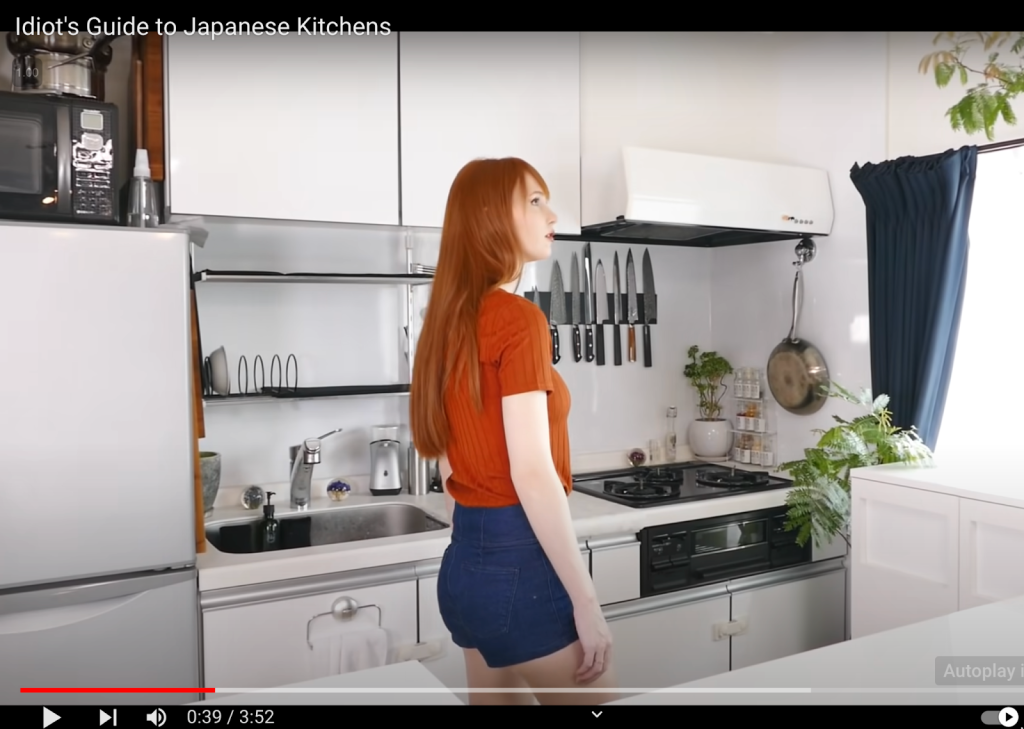
“Idiot’s guide to Japanese Kitchens” Source: Youtube
If you sell a kitchen product, you can “walk through” a Japanese kitchen by searching for “japanese kitchen walkthrough” on Youtube.
This will help you visualize and better understand how Japanese people use your product (or if they use it at all).
By following the steps and the tools above you can get a better idea of product-market fit for your product in Japan and whether your product will sell in Japan.
Bridge 2: Japanification – localization
There are 4 key things that Japanese shoppers pay attention to when shopping online according to Ritu Java, who is a Japan localization and PPC expert who has lived in Japan for 17 years.
1) Language
2) Aesthetics
3) Details – Focus on Data
4) Culture

These are the 4 levers to pull when localizing your product to Japan.
All of them can be done by sellers who don’t speak Japanese.
Language
I’ll be honest – Japanese is a tough language. There are 4 scripts that are used in various situations.
The best way is to hire a native speaker that has Amazon copywriting experience to help you translate.
The quick way is to use ChatGPT. It is miles ahead of Google translate and can help generate a draft of your product listing translation into Japanese.
But I recommend you hire a native Japanese speaker to check and polish it before going live with the listing.
In terms of actually selling in Japan however, the good news is that Amazon Japan Seller Central can be set to ENGLISH.
This means if you’re already familiar with US or EU seller central – you will feel right at home setting up to sell in Amazon Japan.
Aesthetics – Japanese people love to beautify the packaging.
Take for example the art of gift giving in Japan. If you go to a Japanese department store, the basement level will have a whole floor dedicated to selling sweets.
When you buy a box of sweets, the staff will elaborately gift wrap it as if you were a King or Queen.
That is the level of aesthetics Japanese people expect.
Details and Data
Japanese people love details. Take for example a box of wet wipes.
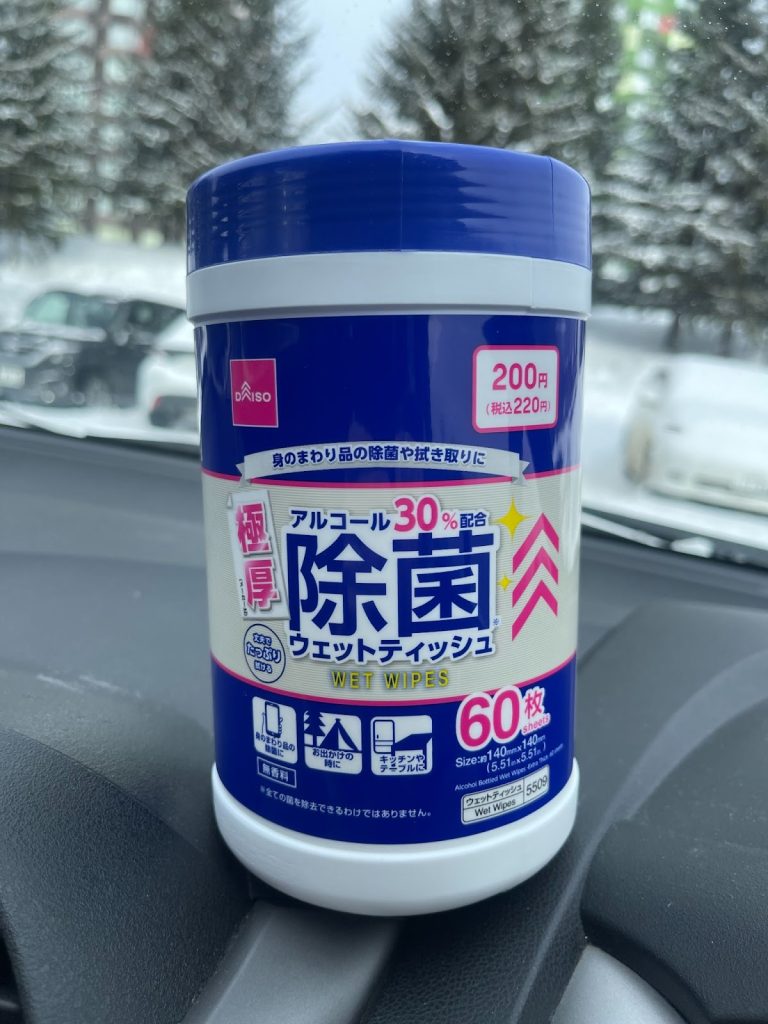
You can see the level of details on this box with
- Alcohol content
- Size
- Thickness
- Exact uses (Devices, outdoors, kitchen, etc)
- The number of wipes
- And much more detail that most Americans would expect for a simple pack of wet wipes
This is all to build trust in the shopper’s mind and increase the chance of the sale.
Culture and Respect
The language and tone of the copywriting must be more polite than your usual copywriting for the US market.
A big “no no” is to say that you are a small family business and to thank them for the purchase.
That is not culturally appropriate in Japan!
Bridge 3: Import and Compliance
“Are there any limitations on what type of products can be sold and are there ways around the limitations?”
Japan has complicated import and compliance laws – but the good news it this is easily surmountable if you find the right agency that can help guide you through the forest of Japanese import laws and regulations.
One example is with a kitchen product that I used to sell in the US market.
Several years ago I considered selling this into Japan and I did the keyword research and ran the numbers.
I got excited because none of my competitors were selling in Japan.
This could have been a wide open market.
However I emailed an import compliance company and they recommended NOT to import this product to Japan.
I found out that one of the components used for this product was illegal in Japan for the general public. It could only be sold to professional restaurants and cafes.
Fortunately I spoke with a Japanese import/compliance agency which saved me a ton of headaches down the line.
Bridge 4: Shipping, Logistics, and 3PL
This challenge is actually a big benefit because Japan is in the same region as your Asian suppliers.
Japan is next to China, not far from India, Vietnam, and Thailand.
This means that you will save time and money shipping your product from your factory to the Amazon Japan fulfillment center.
We are talking about only 7-10 days versus 30-45 days or more.
Also shipping costs will be significantly lower.
If you are a 7 or 8 Figure Seller this should be a light bulb moment because this can free up your cash flow so you can have less money tied up in product inventory since you can turn your orders faster.
In other words rather than keeping 3-4 months of inventory in stock you can effectively shave that in half depending on your inventory management.
Another big benefit is that there is no US-China Trade war in Japan.
Therefore you will shave off 25% or more tariffs from your landed costs.
Also Japan has many free trade agreements with India, Thailand, Vietnam, and over a dozen other countries across the world.
This means you will lower your landed costs more.
That can instantly help improve your margins and profitability compared to sourcing from China and selling in the US or EU.
The key takeaway is that selling in Japan will be a logistical and cash flow ADVANTAGE to your business once you calculate the costs.
Bridge 5: Launch Strategy
Every seller wants to launch their product with a BANG.
The goal is to take advantage of the “honeymoon period” when your product first launches to lock up a high ranking on page 1 of your search results on Amazon.
If you are already selling on Amazon US or EU or any other marketplace – good news.
You can CARRY over your reviews from Amazon US/EU/other markets to Amazon Japan.
This means if you have 700 reviews on Amazon.com (US) you can launch with 700 reviews on Amazon Japan from Day 1.
One other advantage to the lower competition on Amazon Japan is that the review threshold is lower.
As we saw earlier this week, the best selling “thick yoga mat” in Japan only has a 3.9 star rating with 373 reviews.
The US best seller has 4.6 stars and over 70,000 reviews.
This means that if your review count was in the middle of the pack on Amazon.com, you could potentially be leading the pack on Amazon Japan.
You can instantly have social proof with your reviews to build trust for Japanese shoppers and increase your conversion rates and sales.
Bridge 6: Marketing and Advertising optimization.
Once you have your listing localized and selling the next step is to pour fuel on the fire with marketing and advertising.
In terms of Amazon PPC, there are many new promotions added in 2024 and you will get even more rich data from Amazon.
And the good news is that Amazon PPC costs in Japan are lower than Amazon US and EU on average.
So you will likely get better ROI from your PPC ad spend.
In addition, Japan has a “follow the crowd” mentality.
This means that Japanese influencers are a great way to make your product go viral and skyrocket your sales.
In terms of social media, the #1 social media app is Line with a 82.5% penetration rate.
7 Figure Japan seller Nick Katz says that he builds a list of his customers on Line.
And every time there’s a holiday in Japan, he sends a message out on friday and sunday.
And he literally crashes his web server every time he does that (for non Amazon sales) because shoppers are expecting sales around holidays.
These are great ways that you can scale your business through marketing on Amazon Japan.
These are the 6 Bridges to Selling in Japan.
Remember the Obstacle is the Way – by doing the work and selling on Japan the right way, you will be able to build a defensible moat around your business as you expand into a new marketplace in 2024.
Bonus: I will give a 40 min training on the 6 Bridges to Selling on Amazon Japan in further detail at the “Convert More Clicks Summit” online conference on Feb 8th.
There is a small registration fee and I feel if you got value from this, it definitely will help you more as I cover the 6 bridges in greater depth and with more visual examples.
https://www.dropbox.com/scl/fo/zziufkqv7dku7cum2ibyy/h?rlkey=g5big9ovu51tsemfo6shf0ssi&dl=0
I put a lot of time and effort into making this an A+ training for you. If you feel it adds value, I would appreciate it if you would vote for me for the “Most Valuable Presentation”.
Thank you.
Gary
PS: If this was helpful and you are serious about selling on Amazon Japan – I’d like to invite you to join me and 7 and 8 Figure Amazon Japan sellers at the 7 Figure Japan Mastermind in Okinawa Japan Apr 8-10, 2024. Learn more here: https://7figuresellerjapanmastermind.com/
How to optimize your sourcing and shipping costs and be more profitable in 2024
Right now there are TWO FACTORS affecting your sourcing and supply chain time and costs. If you don’t plan ahead, your ecom business could SINK in the midst of this storm.
FACTOR 1: The Suez Canal crisis is increasing ocean freight shipping costs 2x to 3x.
If you haven’t already seen on the news, there literally are pirates shooting missiles at shipping container ships! It sounds like a scene out of a “Pirates of the Caribbean” movie but this is real life and this is affecting your business whether you realize it or not.
The Suez Canal was a shortcut for containers traveling between Asia to the Middle East and Europe. Now to avoid being shot at, the ships need to take the long way all the way down south of Africa, past the Cape of Good Hope.
And then North back up Africa to Europe and the Middle East.
At the end of the day looking at global shipping container prices that are 2x to 3x the container costs. And this is affecting you even if you’re not shipping to Europe.
China to West Coast US (Long Beach, etc) have doubled as well from Dec to late Jan 2024.
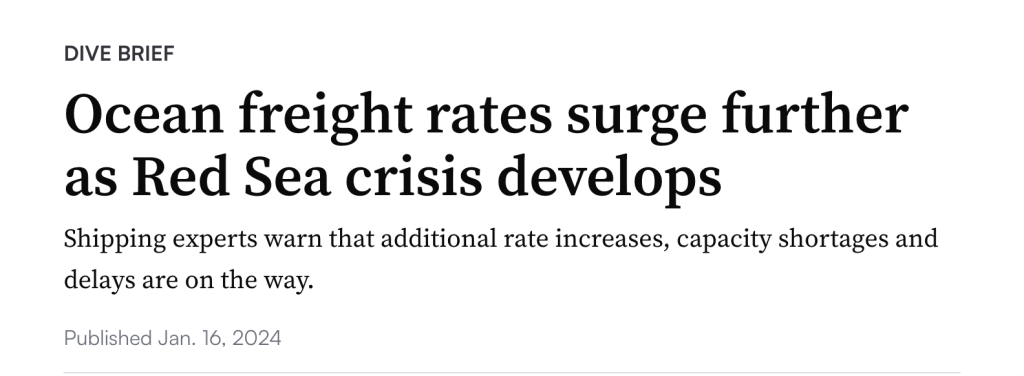
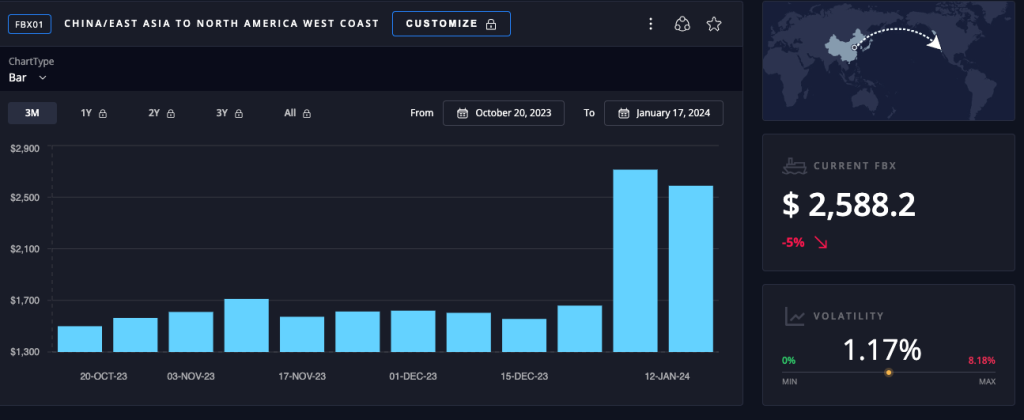

So why should you care as an Amazon and Ecom seller?
The inflated shipping costs are impacting your product landed costs and it’s cutting into your margins if you want to be price competitive in 2024.
FACTOR 2: Chinese New Year Shutdowns
This is an expected disruption but every year around late-Jan to mid February, all of China shuts down to observe the longest holiday of the year – Chinese New Year.
This means that your factory, your sourcing agents, the raw material supplier, your inspection agency, your logistics partners, EVERYBODY in China will be on vacation for up to A MONTH.
While we wait for China to come back, this is a critical time to review how your sourcing and supply chain is performing for you.
These disruptions, combined with soaring expenses, a soft economy, and increased competition, underscore the urgency to keep costs competitive as we aim to have a profitable 2024.
That’s why the TAKEAWAY is this:
Right now is the time smart sellers are optimizing their supply chains
One way to do this is to sell close to the source to bypass this fiasco altogether.
One of the best ways to do that is to sell into Japan. Doing this bypasses the Suez Canal because China and Japan are neighbors.
You are going close to the source and you will save a ton of MONEY and TIME on shipping.
In fact it only takes 7-10 days for a product to ship from China to Japan versus 30-45 days (or more) from China to the US.
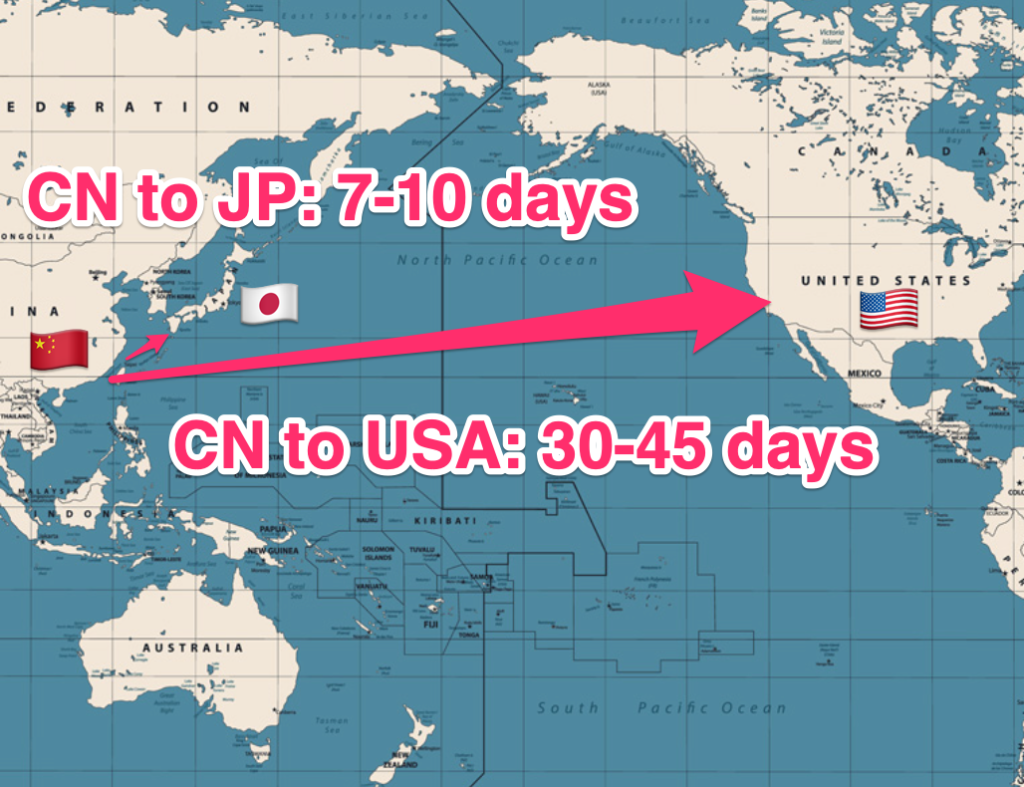
Last year I spoke with Brandon Young, an 8 figure seller selling on Amazon Japan and after explaining to him the short shipping times from China to sell into Japan, a light bulb went off in his head.
He concluded it was a no-brainer to sell in Japan.
Think about the cash flow with the less inventory you have to hold.
Because you can place smaller orders given your short lead time. Instead of placing 2-3 months of inventory now you can place orders for just a few weeks or a month of inventory.
That frees up your cash flow to reinvest to scale your business even faster than your competition that’s still waiting for a slow boat from China to the US or EU.
The second way to optimize your sourcing is to consider sourcing away from China.
If you sell in Japan, Japan actually has free trade agreements with many, many countries all over the world.
So if you shift your sourcing from China to India or Vietnam or Thailand and sell to Japan, you can lower your duties and get some products imported duty free.
So that means you will lower your product landed costs immediately
- Approximately 25% lower product costs because there are no US-China tariffs (depending on your HS Code)
- Additional lower duties from the free trade agreements.
That could mean savings from 40-70% depending on your product categories and your country of origin.
In summary, if you want to optimize your ecom business’ supply chain and make more profits in 2024 then I recommend you take these two steps:
A) Evaluate new marketplaces to sell in (to circumvent the trade war and tariffs) – Japan is one of the best right now given it’s close to the source and it’s the 4th largest Amazon marketplace in the world.
And
B) Consider alternate sourcing destinations (other than China) to eliminate tariffs, reduce duties and lower your product landed costs.
If you want to learn more about selling in Japan, I’d like to invite you to join me at the 7 Figure Seller Japan Mastermind, a 3 day in person conference to show you the roadmap to selling in Japan.
Taking place in Okinawa, Japan from Apr 8-10, this is for you if you are a seller already selling in Amazon US or EU marketplaces are are looking to add an additional $300k-$965,000 in revenue in 2024.
Learn more here https://7figuresellerjapanmastermind.com/
Gary
